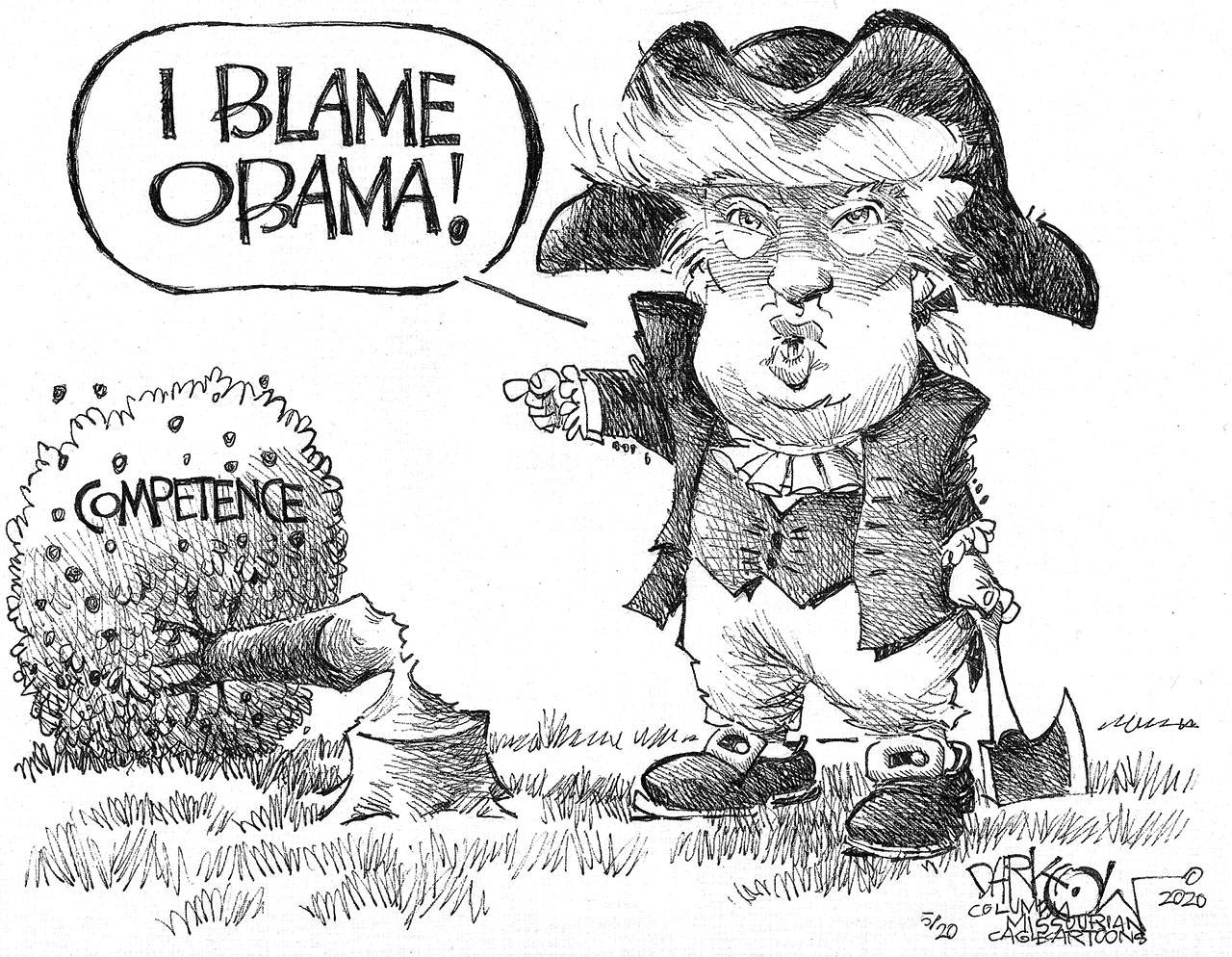By Doyle McManus
Los Angeles Times
On Tuesday, the number of confirmed deaths in the United States from COVID-19 neared 92,000. By the end of next week, the number is likely to rise past 100,000. It will be an arbitrary milepost, but still a painful one.
Will President Donald Trump pause and ask the nation to mourn? Will he set aside an hour to console families that have lost loved ones?
Not if he sticks to his usual practice. Instead, he’ll look for a way to blame someone else — and blunt the number’s impact with statistics of his own making.
After all, this is a man who built a 58-story apartment building, named it Trump Tower, and advertised that it had 68 floors.
This is a man who has claimed that he won the presidency in a “landslide” when his electoral vote margin was well below the historical average.
This is a man who often claims his poll numbers are the best for any Republican president in history when he actually has a firm hold on sixth place among the six GOP presidents since World War II.
This is a man who, only last week, claimed that he had appointed 280 federal judges; the true number is 193.
Flagrant misuse of statistics has been Trump’s pattern during the coronavirus pandemic too —beginning in February, when he predicted that the number of confirmed cases in the country, then 15, would be close to zero “within a couple of days.”
The number is now over 1.5 million, but the president is still predicting good news ahead.
“The number of Coronavirus cases is strongly trending downward throughout the United States, with few exceptions,” he tweeted this week. Actually, the number of new cases is declining in the Northeast, but there’s no strong downward trend in most of the country.
The president’s favorite statistic this month has been the number of tests given. “Over 11 million tests, and going up fast. More than all countries in the world, combined,” he tweeted Monday.
But Trump’s comparison was wildly wrong.
His 11 million tests (now over 12 million) are not even close to the total for the rest of the world. Russia, Germany and Italy combined have done more than 13 million tests; the rest of the world has done at least 30 million.
Still, the president isn’t sure he likes tests as a measure — because tests bring bad news.
“We have more cases than anybody in the world,” he noted last week. “Why? Because we do more testing. When you test, you have a case. When you test, you find something is wrong with people. If we didn’t do any testing, we would have very few cases.”
In any case, the real measure of any country’s success at quelling the pandemic is its death rate — the number of people who die per 100,000 in the population.
Trump has claimed falsely that the United States is winning by that benchmark, too.
“Germany and the United States are the two best in deaths per 100,000 people,” he said last week. “To me, that’s perhaps the most important number there is.”
But he’s wrong. Germany and the United States aren’t “the two best” on any list of countries.
In the Group of 7 advanced democracies, the United States is in fourth place, behind Japan, Germany and Canada. Plenty of smaller countries have lower per capita death rates.
So what’s Trump going to say when the number of U.S. deaths exceeds 100,000?
He may question the number. Conservative pundits including Tucker Carlson and Rush Limbaugh have suggested that the casualty toll has been inflated to make the president look bad.
But there’s no data to suggest that’s true. Dr. Anthony Fauci, the federal government’s top infectious disease scientist, says it’s a “conspiracy theory.”
If anything, most evidence suggests that the current tally is probably an undercount. Medical officials in New York and California say some deaths early in the pandemic weren’t attributed to COVID-19 because there weren’t enough testing kits to spare on victims who had expired.
Instead, the president has already tried out a newly invented statistic: the number of lives he claims to have “saved” because the terrible death toll is still below early worst-case forecasts.
“We would have lost 2 million, 2 { million, maybe more than that,” he said. “We’ll be at 100,000, 110,000 … the lower level of what was projected.”
Never mind that the worst-case forecast, from Imperial College London, assumed that nobody would practice any social distancing at all. And never mind that Trump has frequently said all such models were bunk.
He’s finding that forecast useful now because it helps him move the goalpost.
Here’s the problem: Our death tally is still the highest in the world. Even if China and other authoritarian countries are fudging their figures, the U.S. death rate compares badly to other democracies from Japan to Canada.
“America is first in the world in deaths, first in the world in infection,” William J. Burns, the president of the Carnegie Endowment for International Peace, told the Financial Times last week. “We stand out as an emblem of global incompetence.”
Unfortunately, he’s right. Some numbers don’t lie.
Doyle McManus is a columnist for the Los Angeles Times. Readers may send him email at doyle.mcmanus@latimes.com



